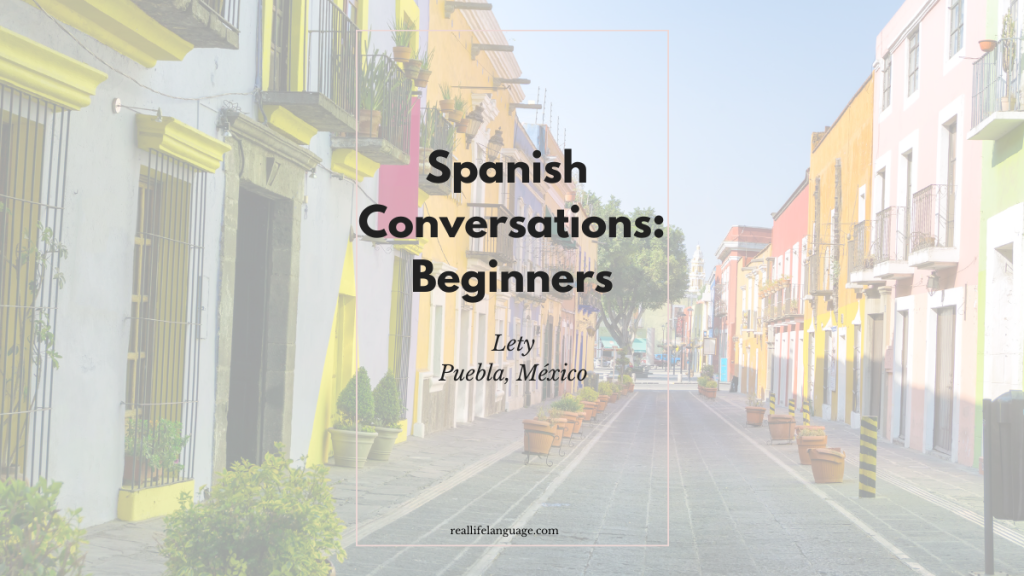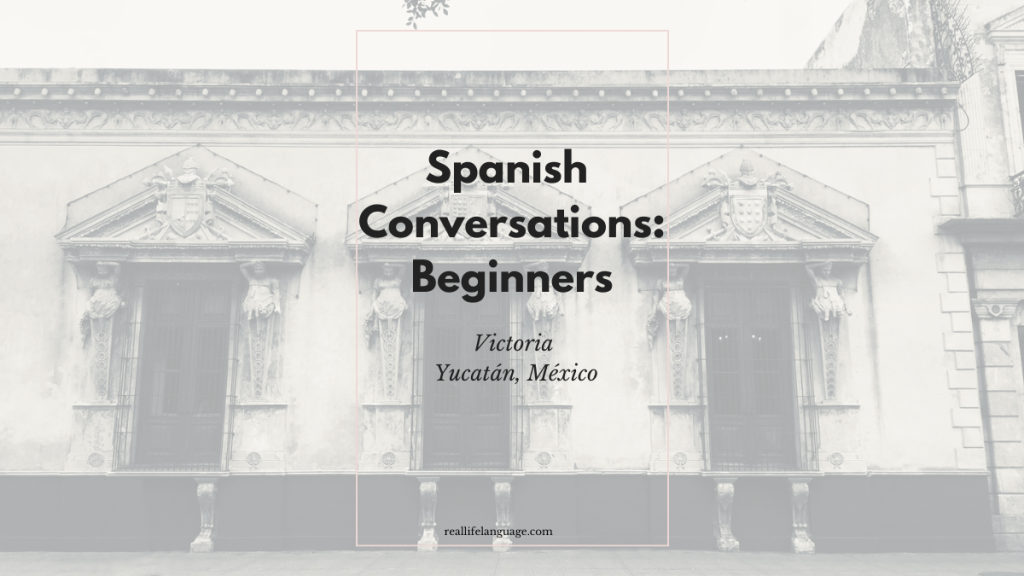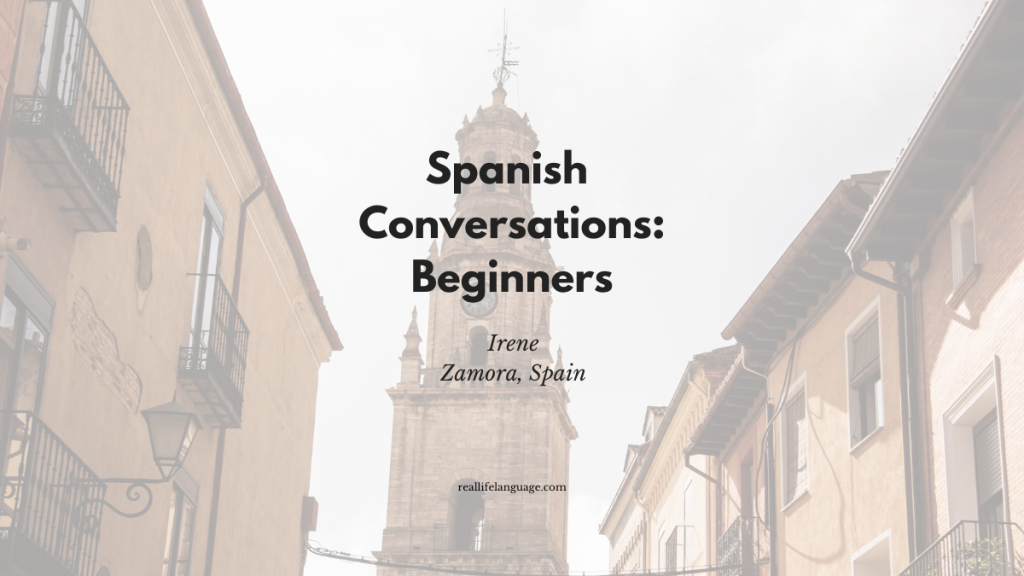
This article accompanies a conversational lesson featuring Lety, a Spanish teacher from Puebla, Mexico, designed to help readers learn Spanish through real, everyday answers and vocabulary. The conversation covers personal introductions, routines, shopping, food, hobbies and descriptions of home and city life — all excellent material for beginners who want to practise natural phrases and build useful vocabulary.
Meet Lety: quick bio and useful phrases
Lety is a Spanish teacher in her forties who lives in Mexico City but is originally from a town near Puebla. She describes herself with friendly, everyday words that learners can recycle in their own introductions.
- ¿Cómo te llamas? — Me llamo Lety. (My name is Lety.)
- ¿De dónde eres? — Soy de Puebla, pero vivo en la Ciudad de México. (I’m from Puebla, but I live in Mexico City.)
- ¿A qué te dedicas? — Soy profesora de español. (I’m a Spanish teacher.)
- ¿Cómo eres físicamente? — Soy chaparrita, de cabello castaño y ojos cafés. (I’m short, brunette, with brown eyes.)
Everyday conversation patterns — questions and model answers
Beginners should memorise a few question-and-answer patterns. Below are common questions from the conversation plus compact answers learners can practise out loud.
- ¿Cuántos hermanos tienes? — Tengo dos hermanos y cinco hermanas. (I have two brothers and five sisters.)
- ¿Qué idiomas hablas? — Hablo español; inglés y francés a nivel básico-intermedio. (I speak Spanish; English and French at a basic-intermediate level.)
- ¿Qué hiciste el verano pasado? — Viajé a Monterrey y a Taxco / Atlixco / pueblos mágicos. (I travelled to Monterrey and to magical towns.)
- ¿Qué te gusta hacer en tu tiempo libre? — Me gusta leer, ver series, bailar y estar con mi familia. (I like to read, watch series, dance and be with my family.)
Daily routine vocabulary and sample timeline
Key verbs and phrases to describe routine:
- levantarse — to get up (Me levanto antes de las siete.)
- desayunar — to have breakfast (Desayuno y tomo una ducha.)
- tener clases — to have classes (Doy clases alrededor de seis horas al día.)
- hacer una pausa / descansar — to take a break / rest
- preparar a los estudiantes — to prepare students (preparo a mis estudiantes para un examen)
Shopping in Mexico: mercado, tienda, supermercado
Lety explains the differences clearly — great vocabulary to learn and practise.
- Mercado — an open-air market with fresh fruit, vegetables and many stalls. Example: Voy al mercado, la fruta está más fresca.
- Tienda — small shop near the house for everyday items (food for the home, cleaning products). Example: Compro pan en la tienda.
- Supermercado — large store with many departments (food, electronics, clothes). Example: En el supermercado encuentro de todo.
Food culture: tacos and typical adjectives
Food is central to conversation practice. Lety names favourites and useful descriptors.
- Tacos al pastor — a popular, marinated pork taco cooked on a vertical spit. Useful sentence: Mi taco favorito es el al pastor.
- Common adjectives: picante (spicy), grasoso (greasy), dulce (sweet), salado (salty), muy sazonado (well-seasoned).
- Core ingredient: la tortilla — essential in many dishes.
Hobbies, sports and entertainment vocabulary
Use these phrases to say what you enjoy:
- Me gusta bailar — I like to dance (salsa, swing, rock).
- Practiqué voleibol / fútbol — I played volleyball / soccer.
- Mi película favorita es… — My favourite movie is… (Lety mentions Cinema Paradiso.)
- Ver series, leer, escuchar música.
Describing home and city
Lety contrasts her town house with a Mexico City apartment — useful structures for learners:
- En mi pueblo — casa con patio grande, muchas plantas, espacio para niños. (In my town: a house with a big lot, plants and space for children.)
- En la Ciudad de México — apartamento de dos cuartos, sala, cocina y baño. (In Mexico City: a two-bedroom apartment.)
- Adjectives: antiguo, moderno, grande, pequeño.
Practice tips to learn Spanish from this conversation
- Shadow short answers: listen and repeat full sentences to build rhythm and pronunciation.
- Memorise Q&A templates: practice the same questions with your own answers (name, origin, job, hobbies).
- Create flashcards of the key vocabulary above (mercado, tienda, taco, picante, levantarse).
- Record yourself describing your daily routine and compare to Lety’s example.
- Use role-play: one student asks questions, the other replies in full sentences.
Conclusion
This conversational set is ideal for beginners who want to learn Spanish through real-life content: introductions, routines, shopping vocabulary, food descriptions and more. Practising these phrases aloud, recycling the question-and-answer patterns, and using the vocabulary lists will help learners build confidence quickly.
For a listening and speaking practice boost, watch the original conversational lesson by the content creator and repeat the short exchanges to reinforce pronunciation and fluency.
100s of videos to learn Spanish:
https://real-life-language.kit.com/b1531a6404
Learn Spanish with Everyday Conversations: Claudia from Mexico City

